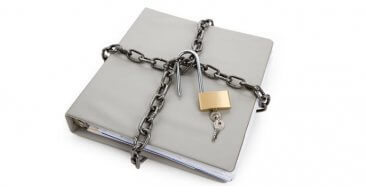
These days, it seems everyone is relying on a Carfax Vehicle History Report for a used vehicle they intend to buy to see if it’s been in a wreck or not. While a Carfax report is a good place to start, it shouldn’t be the final word as to whether the vehicle you’ve got your eye on has been in an accident.
The simple fact is – there are a number of ways that less-than-honest sellers of vehicles can “fly under the radar” and pull a fast one on you – regardless of what’s in the Carfax report. It could be the vehicle sustained substantial body or frame damage in a wreck that wasn’t reported to the DMV or auto insurance carrier. Therefore, there would be no record of the crash and, unless you know what to look for, you could be taken for a ride.
Never assume anything
Never assume anything. Just because the seller boasts of the vehicle having a clean Carfax, doesn’t necessarily make it so. Imagine slamming down five grand on a used car or truck, only to discover later that your ride suffered unreported water damage, a tweaked frame, or had previously deployed airbags, which were hastily repaired or were left inoperative.
Before you test drive the vehicle, check for the following:
1. Paint in places it shouldn’t be
Examine the paint throughout the car. Look for obvious shinier places than others along with discoloration in door panels, fenders, and hood and trunk lid. Keep an eye out for fresh paint that doesn’t match the rest of the vehicle. Take a peek at the door jams, fender wells, and chrome for overspray.
2. Misaligned doors, bumpers, and fenders
No matter what the seller tells you, unless it’s to admit the car was in a previous wreck, inspect the alignment of the doors, fenders, bumpers, and hood and trunk lid. The gaps should be consistent all the way around. Open and close all components for proper fit and ease of closing. If they don’t close easily, it could be a red flag.
3. Bondo is a dead giveaway
A telltale sign of body work is the use of Bondo, a compound used to fill dents or to cover rust damage in a vehicle’s quarter panels or kick panels under the doors.
Rule of thumb: If the Bondo is spread to hide heavy rust damage, which is then painted over – beware! The frame and suspension parts could also be weakened by rust, making your potential new ride unsafe.
Look along the length of the vehicle for waves in door panels and fenders, as well as sanding marks beneath the paint.
4. Compromised frame
While visually inspecting the vehicle’s frame yourself is close to impossible, taking it to a trusted mechanic shouldn’t be. Ask the seller if he wouldn’t mind you having the vehicle inspected by a pro. If he refuses, your suspicions should be on high alert.
A tweaked frame or one that has been partially welded together can lead to a myriad of issues, such as uneven tire, shock and strut wear, difficulty steering around corners, affecting the stability of the vehicle, and the inability to withstand a minor to moderate impact with an object or other vehicle. The result – you or your passengers could sustain severe injuries in a crash.
5. Loose, missing or rusty screws
Surprisingly, many potential buyers of used cars don’t think loose, missing or rusty screws are any big deal. But, they are. As is often the case, body shops, especially those that work in a hurry, have a tendency to misplace some of the screws, nuts and bolts, and plastic fasteners that were originally part of the vehicle. Worse yet, they figure you won’t notice.
However, it’s up to you to notice such things as rusty screws as they can tell you a lot about the vehicle and the guy desperately trying to pawn it off on you.
Some sellers may be offended by your thoroughness, but it’s your money. If everything checks out, take the vehicle for a test drive – and then make your decision. If you decide to purchase it, be sure to get insurance coverage right away. You can get a free car insurance quote from Freeway Insurance that can help you stay protected at a low price.


